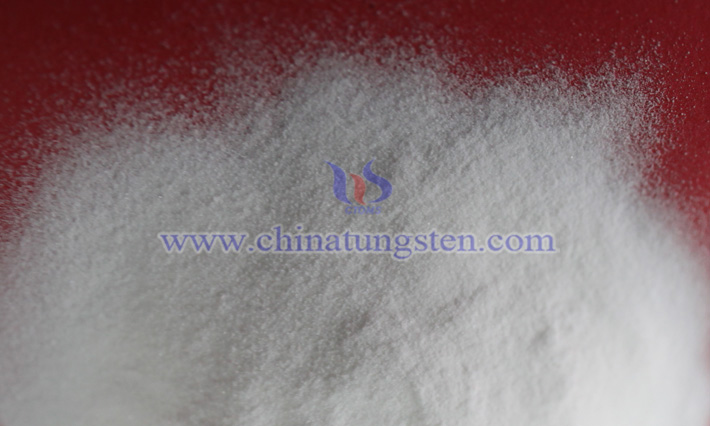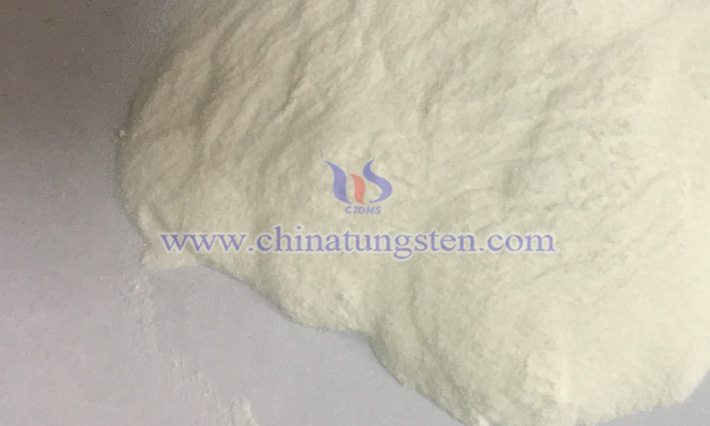What Are the Differences Between Ammonium Metatungstate and Ammonium Paratungstate?
- Details
- Category: Tungsten Information
- Published on Thursday, 29 May 2025 13:56
Ammonium metatungstate (AMT) and ammonium paratungstate (APT) are both important tungsten compounds, classified as ammonium salts of tungsten. They contain tungsten (W), nitrogen (N), hydrogen (H), and oxygen (O), and are commonly used in the preparation of downstream products such as tungsten trioxide and tungsten powder. However, they differ in chemical composition, physicochemical properties, production processes, and applications.

1. Differences in Chemical Composition and Molecular Structure
The molecular formula of AMT is H₂₈N₆O₄₁W₁₂. In its molecular structure, tungsten atoms coordinate with oxygen atoms in polyhedral arrangements, while nitrogen atoms exist as ammonium ions. This compound features a polymeric structure with tungsten in a high oxidation state.
APT, on the other hand, has the molecular formula (NH₄)₁₀W₁₂O₄₁·xH₂O. In APT molecules, tungsten atoms are coordinated with oxygen in an octahedral structure and include crystalline water, forming a more complex crystal structure. These molecular-level differences result in significant variations in properties such as solubility and thermal stability between AMT and APT.
2. Comparison of Physicochemical Properties
AMT appears as a white to slightly yellow crystalline powder. One of its standout features is its high solubility in water—303.99 g/100 g at 20°C—far exceeding that of APT. It is insoluble in ethanol and other organic solvents. In terms of thermal stability, AMT starts decomposing at around 300°C, gradually releasing ammonia and converting to tungsten trioxide (WO₃).
APT appears as white flaky or needle-like crystals. Its solubility varies significantly with temperature: it has low solubility in water at 20°C, but dissolves slowly as the temperature rises. Its thermal decomposition is stepwise: between 220°C and 280°C, it partially releases ammonia and transforms into AMT; above 600°C, it loses all ammonia and crystalline water, completely decomposing into WO₃. Additionally, APT solutions are weakly acidic and prone to hydrolysis in acidic or basic environments.

3. Differences in Production Processes
AMT is typically produced through chemical transformation methods, including:
Solvent extraction: Selective extraction of ammonium ions from ammonium tungstate solutions using organic extractants, enriching metatungstate ions by adjusting pH.
Ion exchange: Conversion of APT into AMT using strong acid cation exchange resins.
Thermal decomposition: APT is mixed with citric acid and decomposed in a far-infrared rotary furnace. After slurry formation, the pH is adjusted, boiled, and evaporated to a 50% solution, which can be spray-dried to obtain spherical AMT crystals.
APT is primarily produced through hydrometallurgical processes from tungsten ores:
Soda pressure leaching–ion exchange method for scheelite: Black tungsten ore is decomposed under high-pressure alkaline conditions and purified via ion exchange to obtain APT.
Hydrochloric acid decomposition–ammonia crystallization for white tungsten ore: White tungsten ore is decomposed with hydrochloric acid and then subjected to ammonia precipitation and crystallization to produce APT.
4. Differences in Applications
Due to its high solubility and ease of conversion, AMT is mainly used in:
Catalysts: As a key component in petroleum cracking catalysts, its high specific surface area significantly improves catalytic efficiency.
Nanomaterials: AMT can be used to prepare tungsten nanoparticles with uniform particle size via liquid-phase reduction.
Functional ceramics: Used as a coloring agent to impart special optical properties to ceramic materials.
APT, on the other hand, is mainly used as a raw material for the industrial production of AMT.
- Chinatungsten Online: ammonium-metatungstate.com
- CTIA GROUP LTD: en.ctia.group
- Tungsten News & Price: www.ctia.com.cn
- Molybdenum News & Price: news.molybdenum.com.cn
- Tel.: 86 592 5129696; Email: sales@chinatungsten.com



 sales@chinatungsten.com
sales@chinatungsten.com